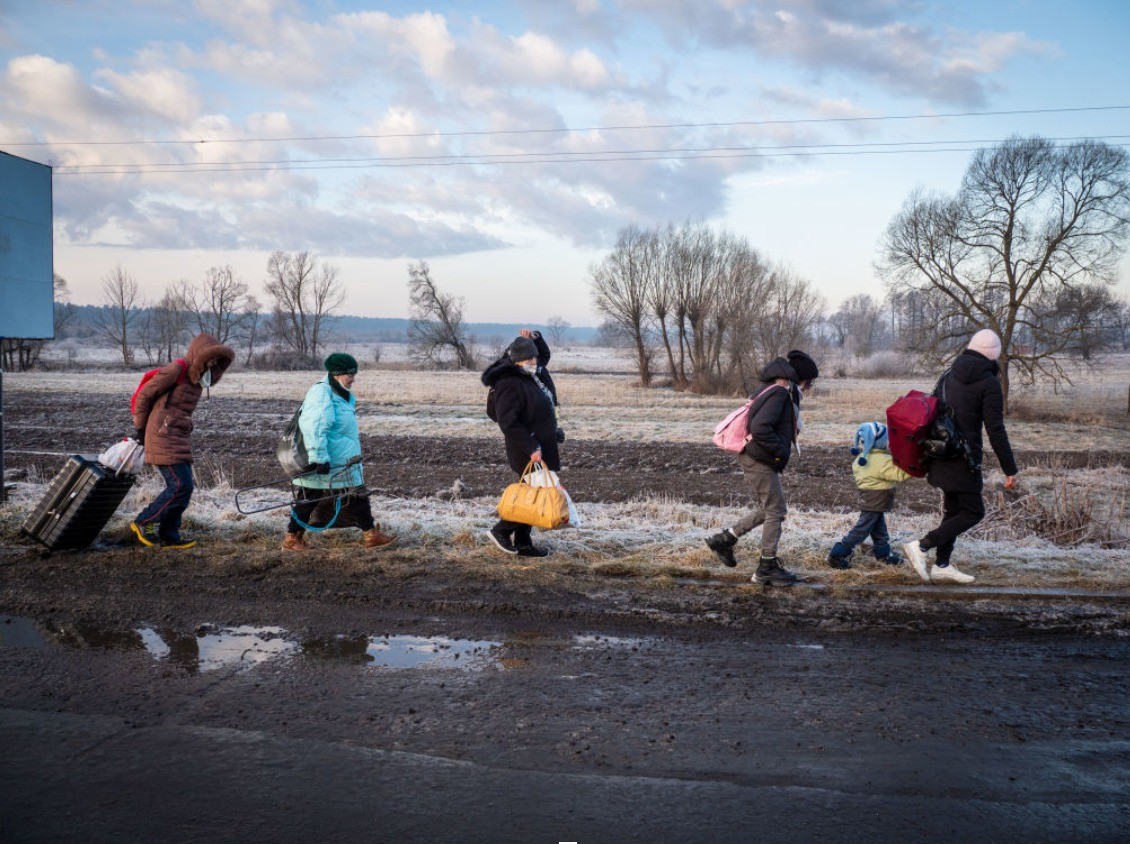Alessandra Gass, Reporter
@agasscourant
Unless you’ve been living under a rock, the growing conflict between Russia and Ukraine has become common knowledge. However, many remain uninformed on crucial details and developments regarding the war. In this post, I’ll be discussing the previous, current, and possible outcomes regarding the state of Ukraine and their ties to Russia.
How did it begin?
In simplest terms, the tension between Ukraine and Russia has been ongoing for decades, and is centralized around a third party, the North Atlantic Treaty Organization (NATO). NATO was created in 1949 to prevent the expansion of the Soviet Union to other countries in Europe. The organization initially had 12 countries, including the United States, Canada, UK, and France, and has since expanded. Ukraine is located in a strategic geographical position, as it has the power to exert influence over large amounts of Europe. Russia desperately wants to prevent Ukraine from joining forces with the West: if Kyiv joins NATO, Russian President Vladimir Putin believes that it will begin to promote western ideology. Russia feels threatened by NATO’s possible expansion to the east and, above all, fears that Ukraine will end up joining NATO, which remains as something that has not yet happened. Putin wants to avoid Ukraine ending up under Western influence at all costs.
Current Status of Conflict
The best way to stay up-to-date on advancements regarding conflict is to simply google “updates on Ukraine/Russia War.” In doing this, credible sources such as the New York Times, Washington Post, and CBS will pop up with articles that have just been published/edited. However, here are newer details that have been released at this point in time (3/16).
- Russian Foreign Minister Sergei Lavrov said that he feels there is “hope for reaching a compromise” with the Ukrainian delegation in peace talks
- Sergei Lavrov, Minister of Foreign Affairs of the Russian Federation, speaking in an interview with the Russian television channel RBC, in an interview with the Russian television channel (RBC)
- President Biden will travel to Europe for a NATO summit on the Russian invasion,
- Top officials in the Czech Republic, Poland and Slovenia made a dramatic visit to Kyiv on Tuesday to demonstrate support for Ukraine.
- After successful evacuations from besieged cities in the past few days, Iryna Vereshchuk (Ukrainian Deputy Prime Minister on Wednesday) accused Russian armed forces of compromising and destroying the flight of civilians by “firing at humanitarian columns of buses” and “gathering points” for evacuations
- The Washington Post has removed its paywall in Russia and Ukraine, giving readers unlimited digital access to their comprehensive coverage
- More than 1.5 million refugees from Ukraine crossed into neighboring countries in the first ten days of the war, and broke records as the fasted growing refugee crisis in Europe since WWII
- Instagram has been banned in Russia
What does this mean for the US?
Despite countless TikToks discussing the possibility of a draft, there is currently no reason for a draft to be ordered. The US would only attack the Russian military if Russia attacked other NATO allies, such as Poland, Lithuania, Latvia, Estonia, etc. Every NATO country would be forced to get involved due to article five of NATO if this were to happen. However, this is extremely unlikely, meaning that the draft is as well. Additionally, President Joe Biden and the Pentagon have repeatedly stated that the American Military is not fighting a war in Ukraine. Our servicemen and women are currently stationed in Eastern Europe to back up our NATO allies that share a border with Ukraine. The President has repeatedly said that they are not there for a combat mission and have no intention of fighting Russia.
How can I help?
The impact of Russia’s unprovoked invasion of Ukraine has been devastating. Moreover, while the situation continues to escalate, so does the need for help. Emergency relief on the ground is essential, and assistance must be provided to those fleeing into neighboring countries.
- Donate!
Donations can be highly effective, and will inevitably provide aid to those suffering. CBS News published a fantastic article listing reputable charities that deserve our support. A few of them include Care.org, Convoy of Hope, and Core Response. The main goal of these organizations varies, as some provide refugee relief while others help those currently in Ukraine.
2. Spread Awareness
While your personal donations are heavily appreciated, real change will occur with large sums of money sent explicitly to those in need of aid. In order to ensure a steady flow of donations, the spread of awareness is vital. Talk to your friends and teachers, and make them aware of beneficial organizations. Alternatively, take to social media, and spread education digitally.
3. Support local Ukrainian journalism
Ukrainian journalists have continued to spotlight the challenges of covering a warzone seemingly formed overnight. They are forced to make strenuous personal choices as they fight to battle Russian propaganda and military strikes. Try to support Ukrainian journalists, as their sacrifices are finally beginning to expose the realities of a war-torn country.




